Dick Orleans' Rocky Mountain Hummingbirds
Subscribe Now!Hummingbirds dart in and out of view in the blink of an eye, their wings beating 60 times a second. Photographer Dick Orleans uses skill and patience to capture fleeting images of the tiny travelers that have flown across the continent for a springtime sojourn in the Rockies.
(This issue originally appeared in the May/June 2013 issue of Colorado Life Magazine)
WALKING MY DOG in mid-May in Estes Park, about a mile from the eastern boundary of Rocky Mountain National Park, I heard a familiar whistling sound moving quickly overhead. Looking all around to locate the source of the sound, it was already out of sight.
It took me a few moments to recognize the high-pitched trilling, reminiscent of crickets, which I had not heard for more than eight months: It was the arrival of the first broad-tailed hummingbird of the season.
The first of these tiny birds to arrive is a male. For the first week, he is the only bird around my house, staking a claim on “his” hummingbird feeders. He will defend them from other hummingbirds flying in from their winter home in Mexico and Guatemala.
This is an important time of year for photographing the individual adult male. He is more accessible – and less frantic – before the arrival of the other birds. I spend early mornings watching his habits and observing his favorite spots to sit in the sun and preen. Now’s the time to get this bird accustomed to me taking photographs and observing his behavior. He will learn that my slowly moving closer and closer is not a threat. Eventually, I will be able to get within a foot of this bird and use a macro lens to capture the minute detail of his colorful feather array.
My feeders have been up for a week or so. The year before, I hung a feeder on an old branch stuck in a flagpole holder on my deck. This stick had several smaller branches, creating a natural perch above the branch where the feeder was attached. This would become the preferred roost for all the male hummers that would claim the feeders and guard them all day long.
Now, I set up three feeders around my southfacing deck and used dead branches to hold all the feeders. I also place a second branch near each feeder to offer additional landing areas for the birds waiting to get a seat at the feeding station. In the height of the summer season, each feeder has about 10 birds vying for a place to perch and drink.
Toward the end of May, other male broad-tailed hummers begin to arrive, as well as some females. It’s obvious when the females come to the neighborhood, because the males put on a fascinating display of aerial acrobatics to attract and impress their prospective mates. A male swoops over to one of the females sitting in a juniper tree and rapidly flies back and forth in a small arc of about 5 or 6 inches. Then he shoots straight up into the sky and dive bombs the female again in a large U-shaped pattern.
Some hummingbirds can maneuver at 50 miles per hour, and when a dominant male chases a rival, it looks like a scene from Top Gun. As more hummers arrive, the commotion and competition increases around the feeders. But even when I stand with a camera a foot from one of the feeders, these birds can maneuver around my head without running into me.
Once the mating time ends, there is a short period of quiet in the neighborhood while the females begin building their nests. They collect spider webs from around the house and gather tiny pieces of lichen and bark. In less than a week, a female – with no help from the male – constructs a nest that will be able to expand with the growth of the young, like natural spandex.
The nest, when completed, has a plush interior made of spider webs, down and other soft materials to provide an insulating environment for the incubating eggs. The exterior is camouflaged with lichens, bark fragments, moss and other small vegetation. When the bright orange males of another species, the rufous hummingbird, arrive around the second week of July, the commotion grows exponentially. After a day or two, rufous hummingbirds take control of the feeders and even chase away the broad-tailed hummingbirds. After this changing of the guard, there is a rufous on a perch above every feeder.
Rufous hummingbirds migrate 3,900-miles from Alaska to Mexico. Their route takes them up the Pacific coast in late winter and spring, reaching Washington and British Columbia in May. As early as July, they fly south again, down through the Rocky Mountains.
Their wings beat 52 to 62 times per second, and you can tell they are near from their unique, low-pitch sound. They move a little slower and more deliberately around the feeders, but are even more skittish than the broad-tailed birds. It takes a lot more time for them to accept the presence of a photographer, and they are easily startled by the sound of the shutter when a photo is snapped.
Two or three Calliope hummingbirds arrive at my feeders for the first time. These are the smallest migratory birds in North America, a mere 2.75 to 3 inches long with a 4- to 5-inch wingspan. Although diminutive, they hold their own against the other species. The Calliopes get their fair share of the hummingbird juice without being intimidated by the noticeably larger birds.
The hummingbirds visit the feeders from dawn to dusk, with less activity in the hottest part of the summer day, but when the final hour of daylight arrives, all the hummingbird species seem to get along as they come for their last drink of the day.
As summer progresses and the bright red Indian paintbrush blooms around the neighborhood, the hummingbirds compete for these flowers. It’s surprising to watch a particular male come out of nowhere to chase the females and the young away from their flowers.
Around the first week of August, the adult male rufous hummingbirds have migrated south and only the young continue to guard the feeders. More and more of the fledged broad-tailed birds appear at the feeders and the Indian paintbrush until the end of August, when the flowers start to wither or are eaten by the deer.
Come September, the leaves begin to change and the hummers’ numbers steadily decline. A few linger in the warm Indian summer days to chase each other around the neighborhood before the last bird leaves at the start of October.
It’s quieter around here after they leave, and I miss them until they return the following spring.
Subscribe to Colorado Life Magazine and receive thoughtful stories and beautiful photography featuring travel, history, food, nature and communities of Colorado.
Story & Photographs by Dick Orleans (1950-2014)
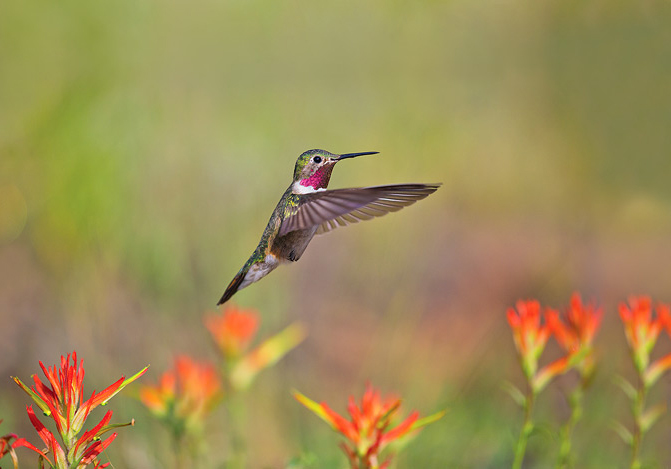
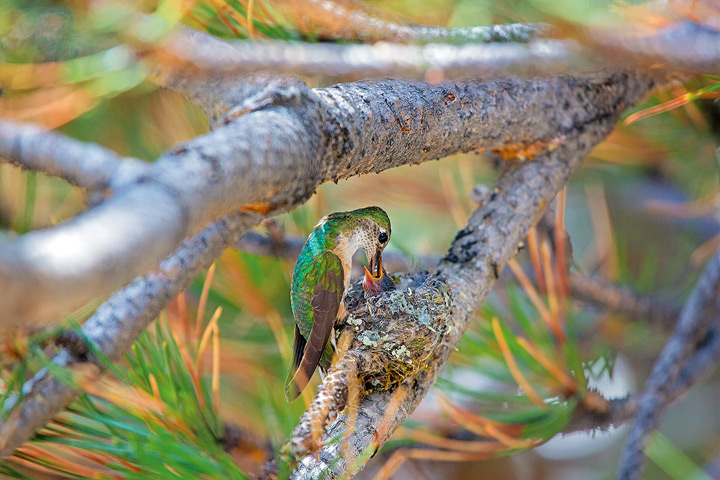
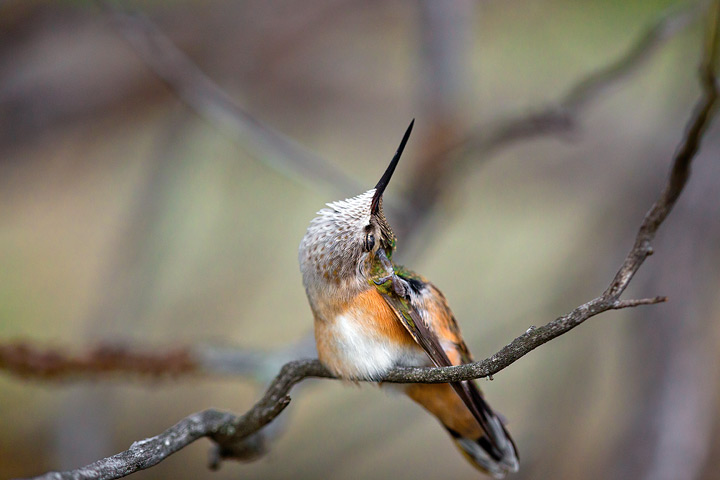
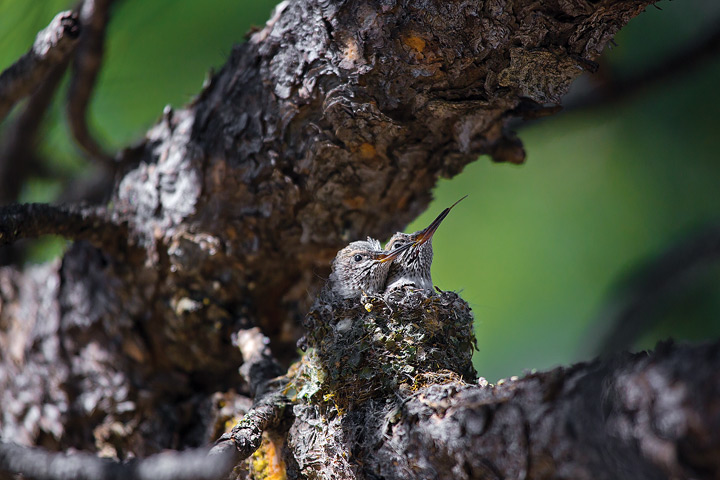
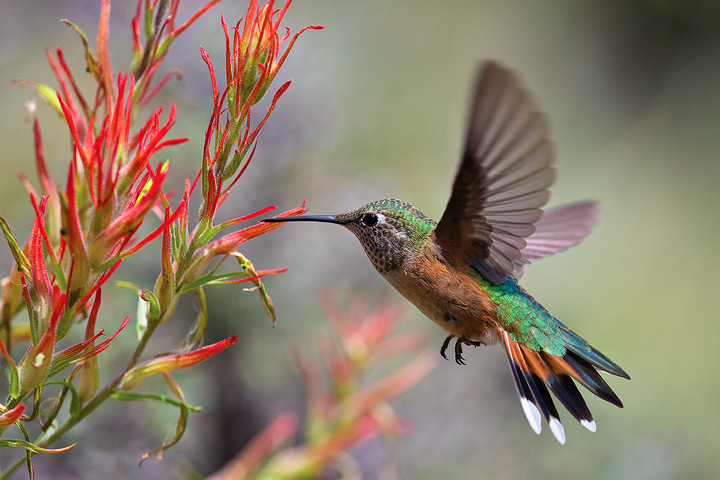
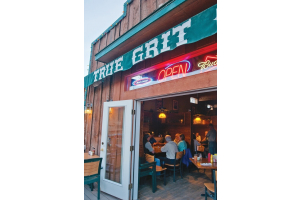
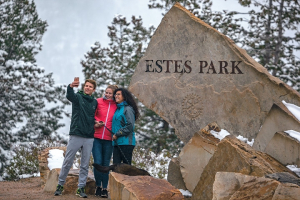
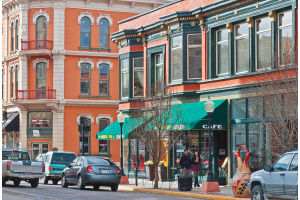
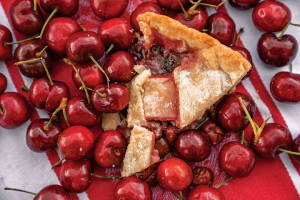
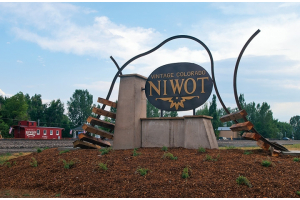
The information below is required for social login
Sign In
Create New Account